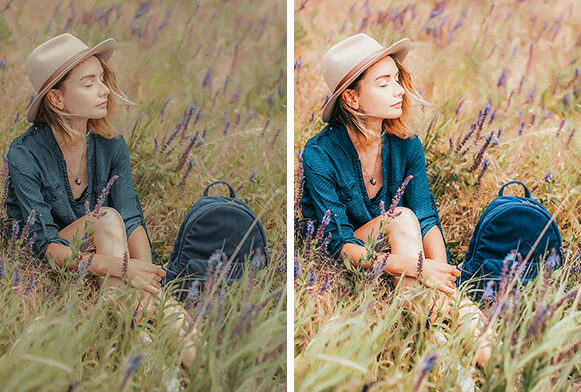Fashion photography is a form of photography that requires more creativity, accuracy, and a good storyline for it to work. The post-processing stage is indispensable for creating maximum aesthetic and professional images. Thus, one of the most effective and effective methods of improving your images is using presets and filters. Many of the tools described here will help elevate your fashion image editing and the overall look of your pictures.
Understanding Presets and Filters
Before diving into how to use them, it’s important to understand what presets and filters are:
Presets: These are premade edits used on your pictures in Lightroom, Camera RAW, Photoshop, or Capture One, among others. Preset is a means of setting exposure, contrast, saturation of the image, the highest and the lowest light areas, and the color range in a single shot, which takes a lot of time but makes it uniform.
Filters: Filters seen in such applications as Instagram or VSCO can be described as the overlays or effects that intervene in the outcome of your image. They regularly insert gradients, patterns, or tonalities corresponding to a certain feeling or subject.
The filters are prepared, thus they are usually less intricate and flexible than the presets, which is why fashion photographers can benefit from using presets.
The Benefits of Using Presets and Filters
The time factor is something that, fortunately, has not escaped from
Fashion Image Editing. The benefits of using presets and filters include:
Consistency: In fashion photography, keeping the continuity of a portfolio of work or a campaign is important. Applying presets in pictures makes it easy to have all the images in a particular tone and style.
Efficiency: Finally, the tedious part of editing hundreds of images manually plays a role. Presets and filters make the work easier because you spend more time on innovation than efficiency.
Professional Results: Professionals usually produce professional presets and are oriented to improve certain kinds of photography. These can be used to create work that looks very professional, sleek, and luxurious.
Creative Experimentation: From the available number of presets and filters, one can change the look of photo shoots they undertook and Beijing with what they consider the best look.
How to Use Presets for Fashion Photography Editing
Choose the Right Editing Software: It is popular among fashion photographers and has a user-friendly interface and loaded features. Other options include Capture One and Photoshop, which is also great.
Find High-Quality Presets: Depending on your option, you can get thousands of presets online from free and paid sources. This will call for some tailored fashion photography if they will effectively improve skin tones, clothes texture, and light.
Apply and Adjust: Choosing a preset is not the end of it. Change settings, if necessary, that correspond to the existing image. In other words, change exposure, alter white balance, or cropping control to gain the optimum outcome.
Batch Editing: To save time, use the batch editing options in Lightroom, through which you can apply the preset to numerous pictures at a go. Go through each image afterward to identify whether it requires further tweaking.
Important Tips on Fashion Photography Editing Using Filters
Select an Appropriate App or Tool: For filter applications, the use of VSCO, Snapseed, or even Adobe Photoshop Express is the most appropriate.
Choose the Right Filter: The filters for fashion images include those that improve the image’s color, contrast, and brightness without emphasizing the subject.
Adjust Intensity: Almost all the applications let you set how much of a filter you want applied to your content. Take pains to achieve a visually unobtrusive but positive contribution to the image.
Layer Filters: Certain ones allow features such as applying multiple filters or effects. This is one of the most exciting parts of building a new page; try to get a special one that will fit the theme you are working with.
Fashion Image Editing Tips
Focus on Skin Tones: Models are usually the focal point of fashion photography, ensuring that presets and filters work well with skin tones.
Highlight Details: Wash the body parts in clothes and accessories thoroughly. Thin down such features as edge and contrast to make these protrude well.
Avoid Over-Editing: Subtlety is key. Too many filters or presets can affect the naturalness of the picture, and it does not look professional.
Save Custom Presets: If you have come up with a sequence of settings, you can save it to use under the custom preset option regularly.
Conclusion
Filters and presets are professional photographers’ best friends in fashion image editing because they help create affected looks speedily. They offer stability, efficiency, and ideas that take you to a new level, bringing your creations into a professional field. In the following sections, you will understand how each tool works and how it can be adapted to your particular purposes to create a unique look for your fashion photography. Do not forget that software tools should not only improve the appearance of your images but also in no way distort your vision.
